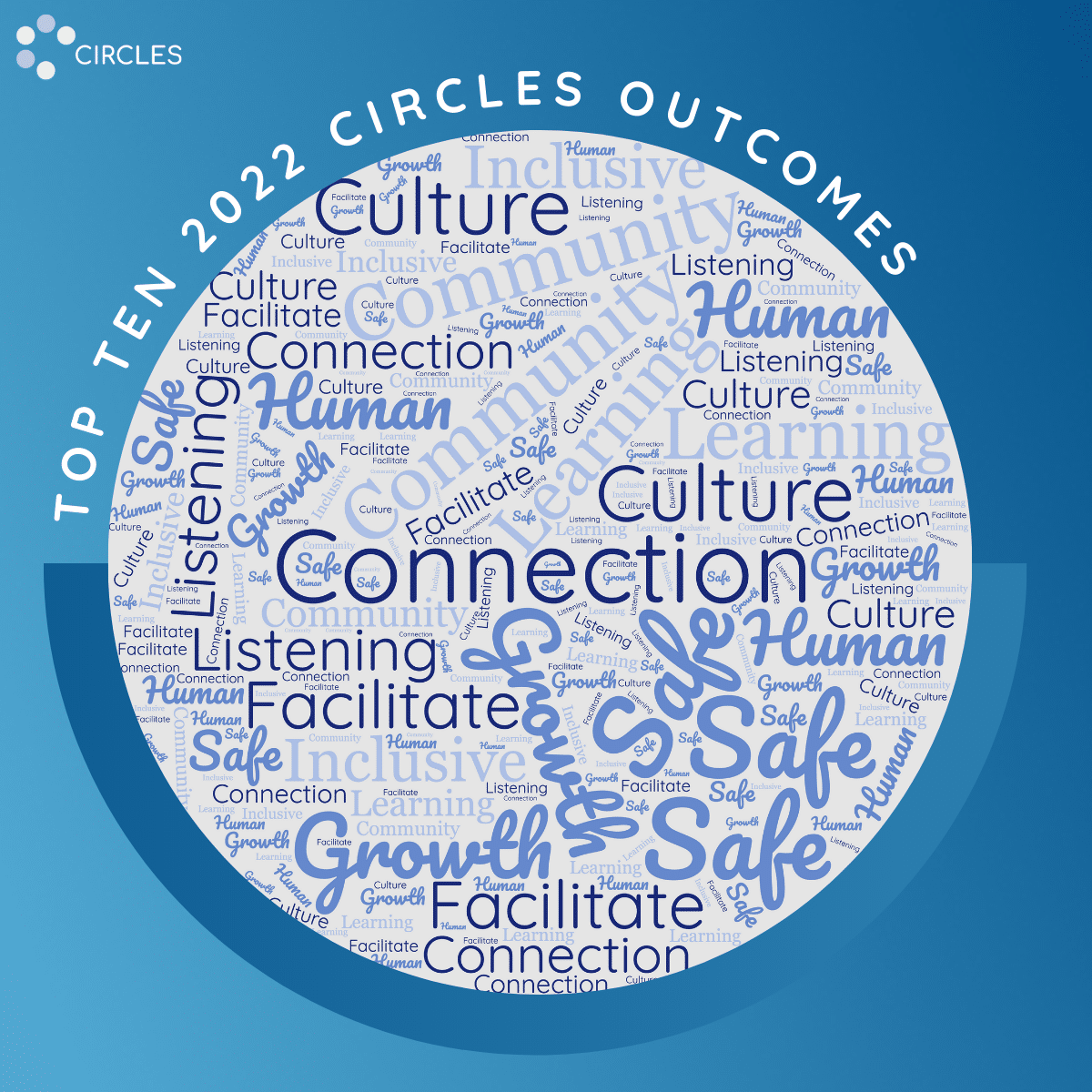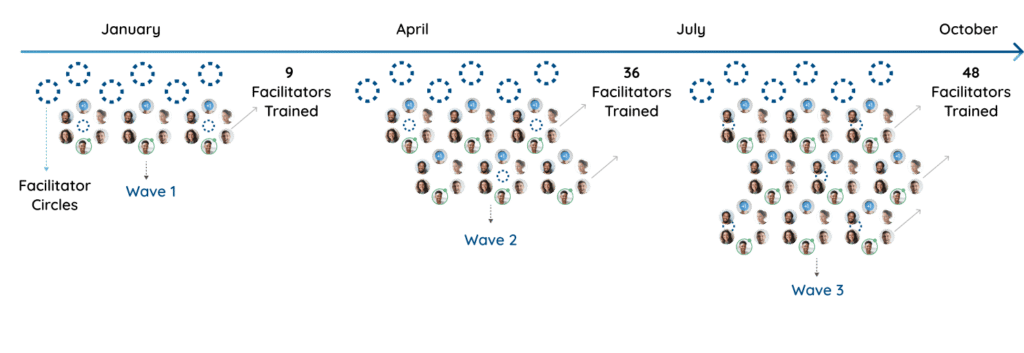As the year comes to a close, we’re celebrating all the ways circles have served our customers this year. From safety and inclusion to connection and growth, here are ten customer quotes highlighting some of the top words used to describe Circles in 2022.
1. Connection. Circles’ primary purpose is connecting people together. “The struggles that I am going through in my company were discussed in depth. Connecting in the group helped me realize that the same challenges I face are the same in all parts of the world.” Harvard Business School’s Executive OPM Network
2. Growth. Meeting in Circles has helped JumpCrew identify and develop rising leaders. “I contribute a lot of my professional growth to Circles–I’m so thankful to have grown from a sales rep into a director, and from a participant into a facilitator” Amber Gold, JumpCrew
3. Community. Some of our customers gather professionals into communities from across organizations. “It was the first time in a training where there’s space to exchange with colleagues and interact. We shared the challenges we are facing, and I feel I am part of a community.” Milagros Jimenez, The GenderSmart Community
4. Inclusive. Circles provide inclusive spaces where teams can connect and grow. “Circl.es creates space for inclusive conversation, where people can think and exchange in a different way than the normal day-to-day business transactional conversations.” JP, Canadian Red Cross
5. Safe. Psychological safety must be present in order for people to truly open up. “I do not use the term “safe space” loosely–as a woman of color, I feel safe spaces are hard to come by. There is an immediate welcoming and safety that I feel comes with Circles, and that seems to be consistently stated by any of our colleagues joining a circle for the first time.” Karla Talley, Glassdoor.
6. Learning. “When I look back over the past year I am amazed at how much I have gained and learned through my Executive Growth Alliance circle – way beyond my expectations.” Oystein Bach Novartis, The Executive Growth Alliance Community
7. Facilitate. Our trained facilitators expertly guide circle conversations. “Circle is so simple, but it can change your life. When you have a really good facilitator who sets the tone and the participants settle upon agreements together, people slow down and listen not to respond, but to understand. We are attracting people who want to be relational, not transactional. So it’s a beautiful fit to have a platform and technology that is bringing people together to truly communicate.” Frances Kraft, Weave the People
8. Human. In circles, the design features and agendas enable authentic human connection. “Today’s circle was the best, and so relevant. Hearing that people are feeling how I am feeling is so comforting!” Stryker participant
9 . Listening. The platform and agendas promote growth in active listening skills. “One growth aspect that I appreciated was participants developing empathy non-judgemental listening skills. They were actually listening to people’s needs and emotions without giving advice. The circles agenda really helps–there were different tips on how to handle change and uncertainty.” Georgios Topolos, DuPont
10. Culture. Outsourced marketing firm JumpCrew connects their distributed workforce through circles. “Circles are a great tool to cultivate culture and transform the way that I think of “work” when I leave my house in the morning. To me, work isn’t just a job that I clock in, clock out, and collect money from; work is a place where I feel valued, seen, heard, and equipped with the tools to succeed and contribute to.” Adriana Wright, JumpCrew
Whether learning from peers or growing in active listening skills, facilitated circles change company culture by connecting employees on an authentic, human level. We can’t think of a better gift this holiday season than inclusive spaces to connect and grow in the new year. Contact us to schedule a demo today!



